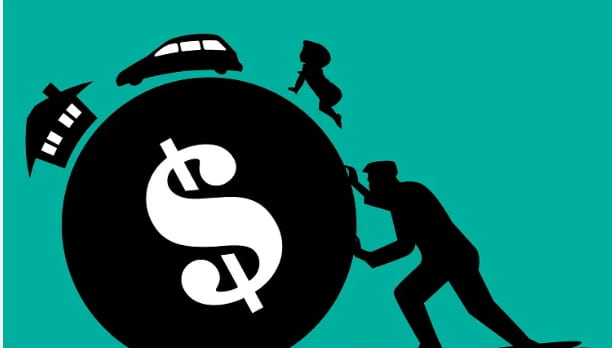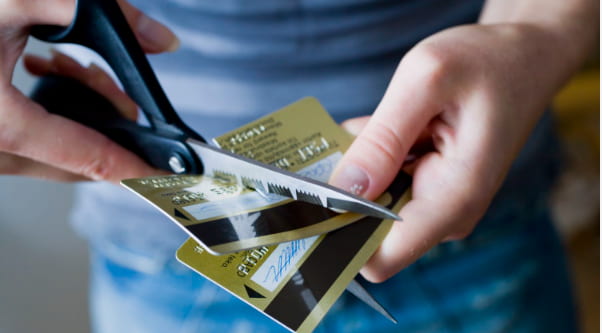Contents
Those numbers that come to mind when you go to bed at night, the end-of-month statements, and that list of debts that never seem to decrease… Sound familiar? Financial debts are one of the biggest sources of stress that not only weighs down our wallets but also our souls, putting an invisible burden on our shoulders. But we have good news for you.
In order to get into the subject of “Ways to Pay off Debt,” it is first necessary to confront debts and present a realistic financial picture. Being able to give clear answers to questions such as how much each debt is, what is the interest rate, when is the payment due date is the first step in debt management. Unfortunately, many people can get stuck in a bigger swamp by underestimating or ignoring their debt.
Another important step to get rid of debt is to review your spending habits and start saving by cutting unnecessary expenses. Even seemingly small daily expenses can have serious savings potential at the end of the month. At the same time, researching additional income streams can speed up the debt settlement process.

In this article, we will talk about the most realistic and sincere steps you can take to pay off debt without judging you or overwhelming you with complicated financial terms. This is not a magic wand, but it is a roadmap that will lead you to financial peace and freedom when applied with determination. If you are ready, let’s take the first step together to get that burden off your shoulders!
Tips to Pay off Debt First Step: Your Due Diligence!
The most difficult but most important step in the journey of pay off debt is the first step: Facing the truth. Most of us avoid looking at bank statements or opening credit card statements because we are afraid. We act as if those debts will disappear if we don’t see them. But sweeping problems under the rug only makes them bigger. Now take a deep breath and bravely stand in front of that financial mirror. Facing the numbers may hurt at first, but it is the first and most powerful step you can take to take control.
Open a blank page or an Excel spreadsheet in front of you and list all your debts one by one. Yes, all of them! Credit card debts, consumer loans, debts to friends or family if you have any… Write down who you owe money to, the total amount of debt, the monthly minimum payment, and most importantly, the interest rate next to each debt. This spreadsheet will be the map of your battlefield. You cannot develop a strategy against your enemy without knowing where and how strong he is.
The second critical step is to understand where your money is going. For a month, without exception, write down every penny you spend. Everything from the bagel you bought that morning to online shopping, from bills to coffee you had outside. You can use a notebook or a budget app on your phone to do this. When you look at your list at the end of a month, you will be surprised. There is often a world of difference between where we “think” our money is going and where it “actually” is going. This is the most valuable information that will guide you when making your budget.

Income and Expenses and Why Do We Make a Budget?
Now it’s time to do a simple calculation. Write down your total monthly income (salary, additional income, etc.) on one side, and your total monthly mandatory and discretionary expenses that you found in the previous step on the other side. How much is the difference? Is it positive or negative? This simple calculation gives you a clear picture of your current situation. This picture helps you understand how serious your situation is and how strict measures you need to take. This is not a judgment, it is just a moment of diagnosis.
Finally, determine a strong “Why?” for yourself. While we are talking about ways to get rid of debt, let’s not forget that this process is a marathon that requires sacrifice and discipline. In order not to lose your motivation in this marathon, you need to know why you are running. Why do you want a debt-free life? To be able to go on vacation comfortably? To buy your own house? To sleep peacefully at night? To feel free not only financially but also spiritually? Write down this “why” somewhere and look at it when you are having a hard time and regain your strength.
Create Your Plan: Budgeting and Payoff Debt Strategies
We need to realize the importance of financial literacy and personal finance management. And now you have overcome the most difficult step by doing due diligence. Now you know the enemy, you have a map in your hand. Now it is time to draw a battle plan by looking at that map. This plan will have two main pillars: A realistic budget and the most suitable debt payment strategy for you. Trying to save money without a plan is like setting sail on a ship with no route. You should know where you are going. Awareness of ways to pay off debt is very important.
Making a budget does not mean depriving yourself of everything; on the contrary, it means taking control of your money. Looking at the spending list you made in the previous step, divide your monthly income into categories: Necessary Expenses (rent, bills, transportation, food), Debt Payments, Savings and Discretionary Spending. You can use the “zero-based budget” method; in other words, plan in advance where every dollar you receive will go so that you do not have any “stray” money at the end of the month.

Speaking of ways to pay off debt, now let’s talk about debt meltdown strategies. One of the most popular and psychologically motivating methods is the “Debt Snowball Method“. In this method, you list all your debts from the smallest debt to the largest, regardless of interest rate. While continuing to make the minimum payment on all your debts, you direct all the extra money you have to the smallest debt at the top. When that debt is gone, with that feeling of victory, you take the money you paid for that debt and put it on the next smaller debt on the list. Small victories turn into a big motivational snowball!
Avalanche Method and Debt Settlement Loan
Another effective method for pay off debt is the mathematically more logical “Avalanche Method” (Debt Avalanche). In this method, you rank your debts from the highest interest rate to the lowest. Again, while making the minimum payment for all of them, you attack the highest interest debt at the top with all your extra power. When this debt is finished, you take its payment and direct it to the next high-interest debt. With this method, you pay less interest in the long run, but it may be a little harder to maintain motivation since the first debt may take longer to finish. Decide which method is right for you according to your own character.
If you have a lot of high-interest credit card debts, you can also look into the “Debt Consolidation” option. This means combining all your debts under one roof, usually with a lower interest rate. In this way, you make a single payment per month and your interest burden is reduced. However, this is not a magic wand.
If you return to your old spending habits after taking out this loan, you may find yourself in even bigger debt than before. So make sure you fix your spending habits before taking this step towards getting rid of debt.

Offense: Tactics to Increase Revenue and Cut Expenses
You’ve made your plan! Your budget is ready, you know which debts you’re going to attack and how. So where are you going to find the extra money to pay off those debts faster? The answer is simple: There are two variables in the equation; either we’re going to reduce our expenses, or we’re going to increase our income, or better yet, we’re going to do both at the same time! Now it’s time to get off the defensive and get on the offensive and fire up your pay off debt payment plan.
Start cutting your expenses with the biggest holes. The three biggest items in your monthly expenses are usually housing, transportation, and food. Even small changes in these areas can leave you with serious money at the end of the month. Maybe you can rent out a room in your house that you don’t use? Maybe you can commute to work by taking public transportation instead of driving? Most importantly, you can get your eating out and unnecessary grocery shopping habits under control by planning your meals. Focusing on these three items is where you’ll get the fastest results.
Now it’s time for those sneaky little leaks: Subscriptions! Sit down and pull up your last month’s bank statement. Gym memberships you don’t use, digital platforms you don’t monitor, app subscriptions you forget about… Identify all of these one by one and cancel them ruthlessly. These seemingly small amounts like 50-100 TL per month can add up to thousands of lira at the end of the year. This money is a clean source that can go directly to your pay off debts.

Ways to Pay Off Debt: Increase Your Income!
Cutting expenses is effective to a certain extent. The real game changer is increasing your income. Look for ways to earn extra income outside of your current job. Maybe you can do freelance work on a subject you are an expert in? Maybe you can turn your hobby (photography, crafts, software, etc.) into a small side hustle? You can create some initial capital by selling things you don’t use at home. Look for side jobs you can do on the weekends. Even an extra $500 a month will increase the speed at which you can get rid of your debts incredibly.
And finally, remember that this pay off debt process is a marathon and stay on track. Sometimes your motivation will drop, sometimes an unexpected expense will come up and your plan will be disrupted. This is very normal. The important thing is not to give up and to stick to the plan again the next month. Be understanding towards yourself but determined towards your goals.

Effective Useful 6 Tips on Pay off Debt
- List All Your Debts:
Create a clear table by writing down the amount of each debt, interest rates, and payment dates. - Pay According to Priority:
Focus on paying off the highest interest debts or the most urgent ones first. - Prepare a Budget and Stick to It:
Create a budget that balances your income and expenses; avoid unnecessary spending. - Find Additional Income Sources:
Increase your income with freelance work, a second job, or the sale of unused items. - Limit Credit Card Usage:
Keep your credit card expenses to a minimum to prevent new debts. - Consider Debt Restructuring:
Consider combining all your debts with a lower interest and long-term payment plan. Consumer loan restructuring and credit card restructuring are very important in getting rid of debt.
